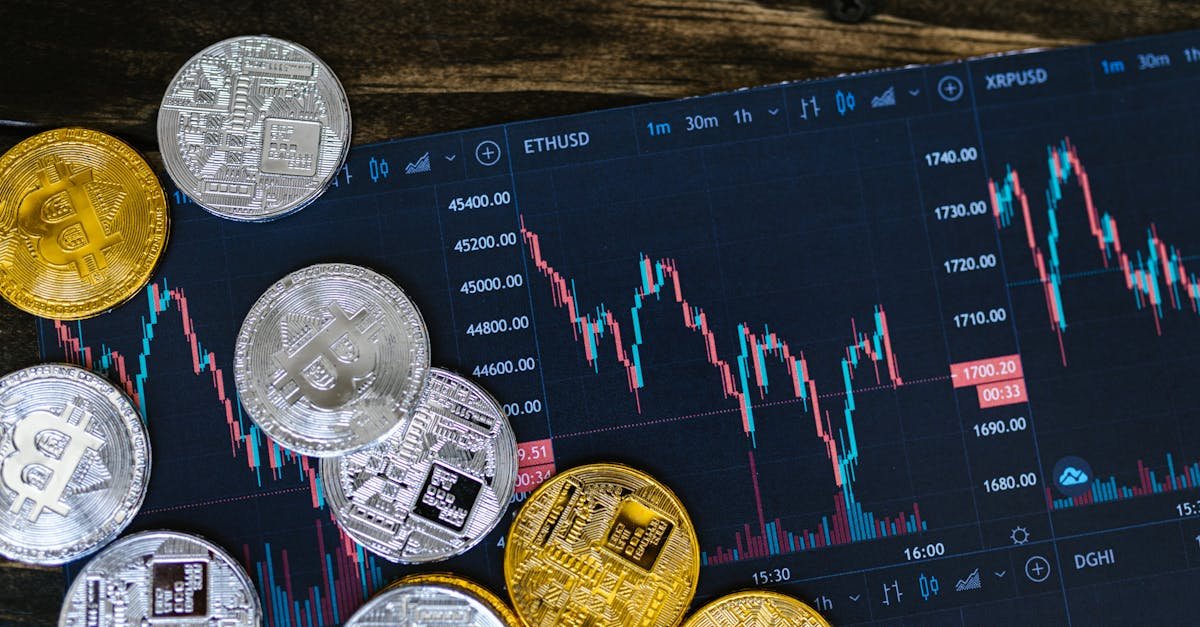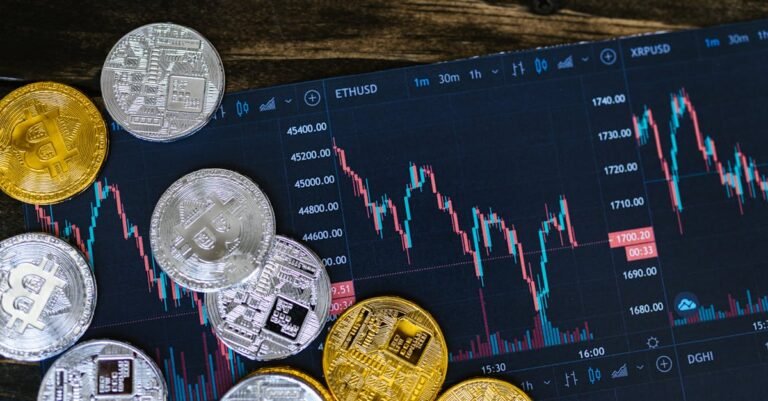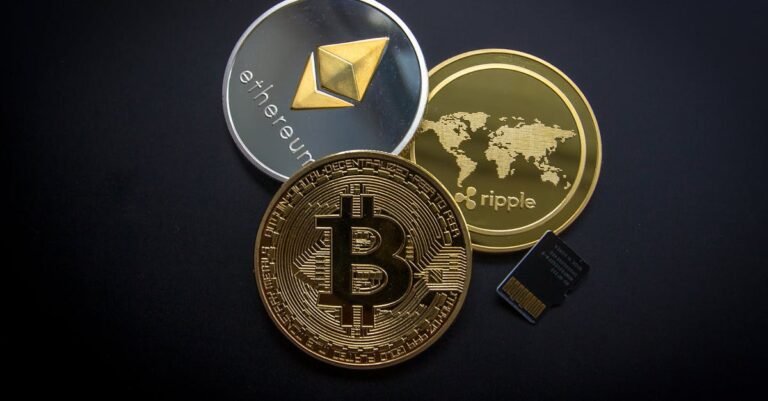How to Invest in Altcoins for the Long Term: A Friendly Guide
So, you’ve heard about Bitcoin, maybe even dipped your toes in. But then you start hearing whispers of other coins, these “altcoins,” promising exciting new technology and maybe, just maybe, explosive growth. Investing in altcoins for the long term… sounds intriguing, right? It feels a bit like venturing into uncharted territory, full of potential treasures but also hidden pitfalls. I get it. When I first started exploring beyond Bitcoin, it felt like learning a whole new language.
The world of alternative cryptocurrencies can seem complex, even intimidating. But what if I told you that with the right mindset, a solid strategy, and a healthy dose of patience, navigating the altcoin market for long term gains is possible? It’s not about getting rich overnight; it’s about identifying promising projects, understanding the risks, and committing to a journey. This guide is designed to be your friendly companion on that journey. We’ll break down the essentials in simple terms, sharing insights and practical steps to help you approach long term altcoin investing with more confidence. Think of this as a chat over coffee, exploring the possibilities together. Remember though, this isn’t financial advice. My goal is simply to share information and perspectives based on experience and research, helping you build your own understanding.
Understanding Altcoins and the Long Term Game
Okay, first things first: what exactly are altcoins? Simply put, altcoins are any cryptocurrencies other than Bitcoin. Bitcoin was the pioneer, the OG digital gold. Everything that came after it – Ethereum, Solana, Cardano, Polkadot, Chainlink, thousands of others – falls under the umbrella of “alternative coins” or altcoins. Think of Bitcoin as the first successful smartphone; altcoins are all the different models and brands that followed, each trying to improve on the original concept or offer entirely new features and functions. Some aim to be faster and cheaper payment systems, others want to power decentralized applications (dApps), enable smart contracts, build the metaverse, or focus on specific niches like privacy or data storage.
Why even bother looking beyond Bitcoin for long term investing? Good question! While Bitcoin is often seen as a relatively stabler store of value within the volatile crypto world (often called digital gold), altcoins offer different potential advantages:
- Higher Growth Potential: Because many altcoins start with smaller market capitalizations (the total value of all their coins), they theoretically have more room to grow exponentially compared to Bitcoin, which is already a massive asset. A $1 billion project doubling is more likely than a $1 trillion asset doubling in the short term. Of course, this higher potential comes with significantly higher risk.
- Diversification: Investing solely in Bitcoin means your fortunes are tied to that one asset. Adding carefully selected altcoins can diversify your crypto holdings. Different altcoins may perform differently based on market trends, technological breakthroughs, or adoption within their specific niche. It’s like not putting all your eggs in one digital basket.
- Exposure to Innovation: The blockchain space is incredibly dynamic. Altcoins are often at the forefront of technological innovation, exploring areas like Decentralized Finance (DeFi), Non Fungible Tokens (NFTs), Web3 infrastructure, Layer 2 scaling solutions, and interoperability between different blockchains. Investing in altcoins can give you a stake in these potentially transformative technologies. Think of investing in the early internet companies – some failed, but others became giants.
- Specific Use Cases: Some altcoins are designed to solve very specific problems or serve particular industries. For example, Chainlink provides decentralized oracle services (feeding real world data to blockchains), while Filecoin aims to create a decentralized storage network. If you believe in the long term value of these specific solutions, investing in their native tokens might make sense.
Now, let’s talk about the “long term” aspect. This is crucial. Investing in altcoins, especially for the long haul, requires a specific mindset. It’s fundamentally different from short term trading. Trading often involves trying to profit from rapid price swings, requiring constant market monitoring and technical analysis. Long term investing, on the other hand, is about:
- Patience: You’re investing in the fundamental value and future potential of a project, not just its current price. This means being prepared to hold through market cycles, which can involve significant downturns (we call them “crypto winters”). Real growth takes time, often years. It’s like planting a tree; you don’t expect fruit the next day. You nurture it and wait for it to mature.
- Volatility Tolerance: Altcoins are notoriously volatile. Prices can swing wildly, sometimes dropping 50% or more in a short period. A long term investor needs the conviction (based on solid research!) to hold through these periods, resisting the urge to panic sell. If you can’t stomach seeing your investment temporarily down significantly, long term altcoin investing might be too stressful.
- Focus on Fundamentals: Instead of obsessing over daily price charts, long term investors focus on the project’s progress. Are they hitting roadmap milestones? Is the team still active and building? Is adoption growing? Is the underlying technology sound? These are the factors that drive long term value.
It’s vital to acknowledge the significant risks involved. Many altcoins will fail. The space is rife with hype, misinformation, and unfortunately, scams. Projects can run out of funding, face technical hurdles they can’t overcome, get outcompeted, or simply fade into obscurity. Regulatory landscapes are also still evolving globally, which can impact specific projects or the market as a whole. That’s why thorough research (which we’ll dive into next) and investing only what you can afford to lose are paramount. Don’t invest your rent money or emergency fund into altcoins!
Having a clear goal for your long term investment is also helpful. Are you investing for retirement in 20 years? To save for a down payment on a house in 10 years? Or simply to grow wealth over a long period? Knowing your “why” helps you stay focused during turbulent times and informs your investment decisions. A longer time horizon generally allows you to take on more risk (like that found in altcoins) compared to someone needing the money in a year or two.
To give you a better sense of the landscape, altcoins can often be grouped into categories, though lines can blur:
- Layer 1 Blockchains: These are the foundational blockchains, like Ethereum, Solana, Cardano, Avalanche, etc. They aim to provide the core infrastructure for decentralized applications. They compete on factors like speed, security, scalability, and decentralization. Investing here is like betting on the underlying “operating systems” of Web3.
- Layer 2 Scaling Solutions: These are built *on top* of Layer 1 blockchains (mostly Ethereum currently) to help them scale, meaning process more transactions faster and cheaper. Examples include Polygon, Arbitrum, and Optimism. They address the bottleneck issues faced by popular Layer 1s.
- Decentralized Finance (DeFi): These projects aim to recreate traditional financial services (lending, borrowing, trading, insurance) using blockchain technology, removing intermediaries like banks. Examples include Uniswap (decentralized exchange), Aave (lending), Lido (liquid staking).
- Metaverse/Gaming: These altcoins power virtual worlds and blockchain based games, often involving NFTs for in game assets or virtual land. Examples include Decentraland (MANA) and The Sandbox (SAND). This is a highly speculative but potentially huge area.
- Oracles: As mentioned, these projects like Chainlink connect blockchains to real world data, which is essential for many smart contracts to function correctly (e.g., DeFi protocols needing accurate price feeds).
- Memecoins: Coins like Dogecoin and Shiba Inu often start as jokes or are driven purely by community hype and social media trends. They typically lack strong fundamentals or clear use cases. While some have seen incredible short term pumps, they are extremely risky for long term investing and should be approached with extreme caution, if at all. Many long term investors avoid them entirely due to their speculative nature.
Understanding these categories helps you start thinking about where innovation is happening and what kinds of projects align with your long term vision. The key takeaway here is that long term altcoin investing is a marathon, not a sprint. It demands patience, a strong stomach for volatility, a commitment to understanding the underlying technology and value proposition, and a clear head amidst the market noise. It’s about believing in the potential of decentralized technologies to shape the future and carefully choosing the projects you think will play a significant role in that future.
Finding Promising Altcoins: The Research Deep Dive
Alright, you understand the potential and the risks, and you’ve embraced the long term mindset. Now comes the most critical part: actually finding those promising altcoins that might be worth holding for years. This is where the real work begins, summed up by the most important acronym in crypto: DYOR – Do Your Own Research. I cannot stress this enough. Never, ever invest in an altcoin just because someone on Twitter, YouTube, or Telegram told you it’s the “next 100x gem.” Hype is fleeting; fundamentals are what (hopefully) endure.
Think of yourself as a detective or an investigative journalist. Your mission is to uncover the truth about a project, separating genuine potential from empty promises. It takes time and effort, but it’s the best way to build conviction in your investments and avoid costly mistakes. So, where do you start digging? Here are the key areas to focus on:
1. The Project & Use Case: What Problem Does It Solve?
- Core Question: What does this project actually do? What real world problem is it trying to solve using blockchain technology? Is this problem significant? Is there actual demand for a solution?
- Uniqueness: Is this project offering something genuinely new or significantly better than existing solutions (both crypto and traditional)? Or is it just another copycat with minor tweaks? Competition is fierce, so a unique value proposition is important.
- Technology (Simplified): You don’t need to be a coder, but try to grasp the basics of how the technology works. Is it a new blockchain? An application built on another chain? What makes it efficient, secure, or scalable? Read simplified explanations, watch explainer videos. Does the tech seem feasible and sustainable?
- Target Audience: Who is the intended user of this project? Is it developers, businesses, individual consumers? Is the target market large enough to support significant growth?
- Example questions: If it’s a DeFi lending platform: How does it ensure loans are repaid? What are the collateral requirements? How does it differ from Aave or Compound? If it’s a Layer 1 blockchain: How does its consensus mechanism work (e.g., Proof of Stake, Proof of Work)? How does it plan to achieve high transaction speeds without sacrificing security or decentralization (the “Blockchain Trilemma”)?
2. The Team: Who’s Behind the Curtain?
- Identity and Transparency: Who are the founders, developers, and key decision makers? Are their identities public? Be very wary of projects with anonymous teams, especially for long term holds. Transparency builds trust.
- Experience and Track Record: What is the team’s background? Do they have relevant experience in technology, business, finance, or the specific industry the project targets? Have they worked on successful projects before (crypto or otherwise)? Look for LinkedIn profiles, GitHub activity (if applicable), and past ventures.
- Communication and Activity: Is the team actively communicating with the community? Do they provide regular updates on development progress? Are they responsive to questions and feedback (check Discord, Telegram, forums)? A silent or evasive team is often a red flag.
- Advisors and Backers: Does the project have reputable advisors or backing from established venture capital firms in the crypto space? While not a guarantee of success, strong backing can provide resources and credibility.
3. Tokenomics (Token Economics): The Engine of Value
This is arguably one of the most crucial but often overlooked aspects. Tokenomics describes the supply, demand, distribution, and utility of the project’s native token (the altcoin you’re thinking of buying). Bad tokenomics can doom even a project with great technology.
- Token Utility: What is the actual use of the token within the project’s ecosystem? Does it grant voting rights (governance)? Is it used to pay transaction fees? Is it required for accessing services? Can it be staked to earn rewards and secure the network? The more integral the token is to the platform’s function, the more potential demand there might be if the platform succeeds. Tokens with little or no utility rely solely on speculation.
- Supply Dynamics:
- Total Supply & Max Supply: Is there a maximum number of tokens that will ever exist (like Bitcoin’s 21 million)? Or is the supply potentially infinite (inflationary)?
- Circulating Supply: How many tokens are currently available on the market? Compare this to the total/max supply. A large difference might indicate many tokens are yet to be released, potentially diluting the price later.
- Inflation/Deflation: Is the supply designed to increase over time (inflationary, e.g., through staking rewards) or decrease (deflationary, e.g., through token burning mechanisms)? Understand how this impacts scarcity.
- Token Distribution: How were the tokens initially distributed? Was it a “fair launch” where everyone had an equal chance to acquire tokens early on? Or was a large portion allocated to the team, private investors (VCs), and advisors? Large insider allocations can be concerning if those holders might dump their tokens on the market later. Look for vesting schedules – periods during which insiders are prevented from selling their tokens. Longer vesting schedules are generally better, showing long term commitment.
- Incentives: How does the system incentivize holding and using the token? Are there staking rewards? Liquidity mining programs? Governance participation rewards? These mechanisms can influence supply and demand.
- Example Questions: How much of the total supply does the team hold? When can they start selling? What mechanisms are in place to drive demand for the token as the platform grows? Is the inflation rate from staking sustainable?
4. Community & Adoption: Is Anyone Actually Using This?
- Community Vibe: Check the project’s main communication channels (Discord, Telegram, Twitter, Reddit). Is the community active, engaged, and genuinely interested in the project’s development? Or is it mostly focused on price speculation (“wen moon?”)? A strong, supportive community can be a powerful asset. Look for helpful discussions, developer interaction, and organic growth.
- Real Usage & Traction: This can be harder to gauge, but look for signs of actual adoption. Are people using the dApp? Are businesses partnering with the project? Look for metrics like daily active users, transaction volume on the platform (on chain data can be useful here, though requires more advanced tools like Glassnode or Nansen sometimes), or growth in total value locked (TVL) for DeFi projects. Growing adoption is a strong indicator of long term potential.
- Partnerships: Are there meaningful partnerships with other reputable projects or established companies? Partnerships can signal credibility and help drive adoption. Evaluate if the partnership is substantial or just a marketing announcement.
5. Market Cap & Potential Growth: Realistic Expectations
- Market Capitalization: Calculate or find the market cap (Current Price x Circulating Supply). This gives you a sense of the project’s current size and valuation in the market.
- Comparative Analysis: Compare the project’s market cap to similar projects in the same category. Is it significantly higher or lower? Why? Does its valuation seem justified based on its progress, tech, and team compared to competitors?
- Growth Potential: Based on the market cap, the size of the problem it solves, and competitor analysis, try to gauge realistic growth potential. A coin already in the top 10 by market cap is less likely to do another 100x compared to a promising project ranked 200th (though the lower ranked project is also much riskier). Avoid unrealistic price predictions; focus on whether there’s a solid foundation for sustained growth.
6. Whitepaper & Roadmap: The Blueprint and the Plan
- Whitepaper: This is the foundational document outlining the project’s goals, technology, tokenomics, and architecture. Read it (or at least summaries and critical analyses of it). Does the concept make sense? Is it well thought out? Is the technology described clearly? A vague or overly complex whitepaper filled with buzzwords can be a red flag.
- Roadmap: Does the project have a clear roadmap outlining future development milestones and goals? Is it ambitious yet achievable? Crucially, is the team actually delivering on its roadmap promises? Check past progress against stated goals. Consistent delivery builds confidence.
Tools for Research: You don’t have to do this in a vacuum. Useful resources include:
- Coin Information Sites: CoinMarketCap, CoinGecko (good for checking price, market cap, supply, exchanges, brief project description, links to official website/socials).
- Project Official Channels: The project’s own website, blog, Twitter, Discord, Telegram. Primary sources are important, but view marketing claims critically.
- Crypto Research Platforms: Messari, Delphi Digital (often require subscriptions but offer in depth analysis).
- On Chain Data Providers: Glassnode, Nansen (can be complex but show actual blockchain activity).
- Crypto News Outlets: CoinDesk, Cointelegraph, The Block (use critically, differentiate news from opinion/sponsored content).
- Community Forums: Reddit (specific subreddits for coins), other forums. Good for gauging sentiment but rife with bias and misinformation – use cautiously.
Red Flags to Watch For:
- Anonymous team
- Vague or plagiarized whitepaper
- Unrealistic promises of guaranteed high returns
- Excessive hype and aggressive marketing focusing only on price
- Poor token distribution (huge amounts held by team/early investors with short vesting)
- Lack of transparency or communication from the team
- No clear use case or utility for the token
- Fake partnerships or exaggerated claims
- Evidence of “pump and dump” activity in the price chart or community
Researching altcoins is an ongoing process, not a one time event. Even after you invest, keep tabs on the project’s progress. Doing this deep dive helps you build genuine conviction, allowing you to hold confidently through market volatility, knowing *why* you invested in the first place. It’s the difference between gambling and making informed, strategic long term investment decisions in the exciting but wild world of altcoins.
Building and Managing Your Long-Term Altcoin Portfolio
Okay, you’ve done your homework, identified some altcoins that genuinely excite you based on their fundamentals, team, and long term potential. Now, how do you actually start building and managing your portfolio for the long haul? It’s not just about picking coins; it’s about strategy, security, and discipline.
1. Start Small – Seriously Small
This is probably the most repeated advice in crypto, but it’s golden, especially with altcoins. Never invest more money than you can comfortably afford to lose. Altcoins are inherently riskier and more volatile than Bitcoin or traditional assets like stocks. Think of the money you allocate to altcoins as speculative capital. Start with a small amount, get familiar with the process of buying, storing, and tracking, and gradually increase your investment over time if you feel comfortable and your research continues to support your decisions. This approach minimizes potential regret if things go south and prevents financial distress.
2. Diversification: Your Shield Against Ruin
Putting all your investment capital into a single altcoin is extremely risky. Even the most promising project can fail or underperform. Diversification is key to managing risk. This doesn’t just mean buying lots of different coins randomly. It means thoughtfully spreading your investment across:
- Different Project Categories: Consider allocating funds to various sectors within crypto, such as Layer 1 blockchains, DeFi protocols, oracle networks, Layer 2 solutions, or perhaps even a small, speculative allocation to metaverse/gaming if that fits your risk profile. This prevents your entire portfolio from being overly exposed to problems in one specific niche.
- Different Risk Levels: You might anchor your portfolio with a larger allocation to more established cryptocurrencies like Bitcoin and Ethereum, which are generally considered less risky than most altcoins. Then, allocate smaller percentages to higher growth potential (and higher risk) altcoins based on your research.
- How many coins? There’s no magic number, but holding too many (e.g., 50+) can make it impossible to research and track them properly. Many long term investors find a portfolio of 5-15 well researched coins manageable, alongside core holdings like Bitcoin or Ethereum.
Diversification won’t guarantee profits or prevent losses entirely, but it can significantly reduce the impact if one of your investments performs poorly. It smooths out the ride.
3. Dollar Cost Averaging (DCA): Taming Volatility
Trying to “time the market” – buying at the absolute bottom and selling at the absolute top – is incredibly difficult, if not impossible, especially in the volatile crypto market. A much less stressful and often more effective strategy for long term investors is Dollar Cost Averaging (DCA).
Here’s how it works: You invest a fixed amount of money into your chosen altcoin(s) at regular intervals (e.g., $50 every week, $200 every month), regardless of the price.
- When the price is high, your fixed amount buys fewer coins.
- When the price is low, your fixed amount buys more coins.
Over time, this strategy averages out your purchase price. It removes emotion from the buying decision (no more FOMO buying at peaks or panic selling during dips) and ensures you consistently accumulate assets over the long term. It enforces discipline. For altcoins, where price swings can be dramatic, DCA is a powerful tool to build a position without stressing over finding the perfect entry point. It’s a strategy that aligns perfectly with the long term, patient approach.
4. Choosing Where to Buy: Exchanges and Wallets
- Centralized Exchanges (CEXs): Platforms like Coinbase, Binance, Kraken, Gemini, etc., are the most common places to buy altcoins. They offer user friendly interfaces, a wide selection of coins, and various deposit options (bank transfer, debit card). When choosing an exchange, consider factors like:
- Security: Does the exchange have a good security track record? Do they offer features like two factor authentication (2FA)?
- Fees: Understand the trading fees, deposit/withdrawal fees.
- Coin Selection: Does it list the specific altcoins you’re interested in?
- Regulation & Reputation: Is the exchange regulated in your jurisdiction? Does it have a good reputation?
- Decentralized Exchanges (DEXs): Platforms like Uniswap (Ethereum), Sushiswap (Ethereum), PancakeSwap (Binance Smart Chain), or Raydium (Solana) allow you to trade directly from your own crypto wallet without an intermediary. They often list newer or smaller altcoins not yet available on CEXs. However, they require more technical understanding (using wallets like MetaMask), you are responsible for your own funds (no customer support if you make a mistake), and you might encounter concepts like “gas fees” (transaction costs on the blockchain) and “slippage” (price changes during a trade). DEXs are generally considered higher risk for beginners.
5. Secure Storage: Not Your Keys, Not Your Coins!
This is absolutely critical for long term holding. Keeping large amounts of cryptocurrency on an exchange long term exposes you to risks like exchange hacks, freezes, or bankruptcies. For serious long term investment, you need to take control of your own assets using self custody wallets.
- Hardware Wallets (Cold Storage): Devices like Ledger Nano S/X or Trezor are physical devices that store your private keys offline. They are considered the most secure way to store crypto long term. Transactions are signed on the device itself, so your keys never touch the internet connected computer. Think of it as a high tech vault for your digital assets.
- Software Wallets (Hot Storage): These are apps on your computer or phone, like Exodus, Trust Wallet, or MetaMask. They are more convenient for frequent transactions or interacting with dApps/DEXs. However, because they are connected to the internet, they are more vulnerable to malware, phishing attacks, and hacking than hardware wallets. They are suitable for smaller amounts or coins you plan to interact with regularly.
- Seed Phrase/Recovery Phrase: The Ultimate Key! When you set up a self custody wallet (hardware or software), you’ll be given a unique 12 or 24 word seed phrase. This phrase is the master key to all your crypto in that wallet.
- Write it down carefully and accurately.
- Store it securely offline (e.g., on paper, metal plate) in multiple safe locations.
- NEVER store it digitally (no photos, emails, cloud storage, password managers).
- NEVER share it with anyone, ever. Anyone with your seed phrase can steal all your funds. Treat it like the keys to your entire crypto fortune.
Moving your altcoins from the exchange to your personal secure wallet is a vital step for long term peace of mind.
6. Portfolio Tracking: Monitor, Don’t Obsess
It’s good practice to keep track of your investments. Use portfolio tracking tools (many exchanges offer them, or dedicated apps like CoinStats, Delta, or the portfolio features on CoinMarketCap/CoinGecko) to monitor your allocations, performance, and total value. However, avoid checking prices constantly throughout the day. This can lead to emotional decision making. Check in periodically (e.g., weekly or monthly) to stay informed, but focus on your long term strategy, not short term fluctuations.
7. Rebalancing (Occasionally): Maintaining Your Strategy
Over time, due to market movements, your portfolio’s original allocation might drift. For example, one altcoin might surge in price and become a much larger percentage of your portfolio than you initially intended, increasing your risk concentration. Rebalancing involves periodically selling some of the winners and buying more of the underperformers (or your core holdings) to bring your portfolio back to its target asset allocation. This forces you to take profits from outperformers and buy assets that are potentially undervalued. Decide on a rebalancing frequency (e.g., quarterly, semi annually, or when allocations drift by a certain percentage like 5-10%) and stick to it. Avoid frequent rebalancing, as it can incur transaction fees and taxes.
8. Exploring Staking and Yield: Putting Your Assets to Work
Many altcoins, especially those using a Proof of Stake consensus mechanism, allow you to “stake” your coins. This typically involves locking them up in your wallet or delegating them to a validator node to help secure the network. In return, you earn staking rewards, usually paid in the same altcoin. It’s a way to potentially earn passive income on your long term holdings. Research the specifics for each coin: how to stake, the potential rewards (APY), any risks (like “slashing” penalties if your chosen validator misbehaves), and lock up periods. DeFi platforms also offer various yield generating opportunities (like providing liquidity), but these often come with additional complexities and risks (smart contract risk, impermanent loss).
9. Tax Implications: Don’t Forget Uncle Sam
In most countries, cryptocurrencies are treated as property for tax purposes. This means buying, selling, trading, or even spending your altcoins can trigger taxable events (capital gains or losses). Earning staking rewards is often considered taxable income. Keep meticulous records of all your transactions (dates, amounts, prices in your local currency). Consider using crypto tax software to help calculate your obligations. It’s highly recommended to consult with a qualified tax professional familiar with cryptocurrency regulations in your jurisdiction. Ignoring taxes can lead to serious problems down the line.
Building and managing a long term altcoin portfolio is an active process. It requires setting up secure systems, sticking to a disciplined strategy like DCA and diversification, occasionally rebalancing, and staying aware of important considerations like security and taxes. It’s about building a resilient structure that can weather the storms of the crypto market and support your long term financial goals.
Staying Informed and Managing Emotions
So, you’ve done your research, built a diversified portfolio using DCA, secured your assets, and have a long term plan. Now comes the often underestimated challenge: navigating the emotional rollercoaster of the crypto market and staying informed without getting overwhelmed. The crypto market operates 24/7, is influenced by global events, technological breakthroughs, regulatory news, and sometimes, pure sentiment. It can be intense.
Dealing with Extreme Volatility: Taming FUD & FOMO
Two acronyms dominate the emotional landscape of crypto investors: FUD and FOMO.
- FUD (Fear, Uncertainty, Doubt): This spreads like wildfire during market downturns or negative news events. You’ll see scary headlines, pessimistic posts on social media, and maybe even doubts creeping into your own mind about your chosen projects. The urge to panic sell and “cut your losses” can be overwhelming.
- FOMO (Fear Of Missing Out): This hits when prices are rocketing upwards. You see stories of people making huge gains on a coin you didn’t buy, and you feel an intense urge to jump in before you miss out on even more profits, often ignoring your research and strategy.
Both FUD and FOMO lead to emotional decision making, which is the enemy of successful long term investing. How do you combat them?
- Anchor Yourself to Your Research: When FUD strikes, revisit why you invested in a particular altcoin in the first place. Have the fundamentals drastically changed? Is the team still building? If your original investment thesis remains intact, the price drop might just be market noise or even an opportunity (if using DCA). Having conviction based on research is your best defense.
- Stick to Your Plan: Your DCA strategy, diversification, and long term horizon were designed precisely to handle volatility. Trust the process. Don’t abandon your strategy based on short term market sentiment.
- Limit Exposure to Noise: While staying informed is important (more on that below), constantly monitoring prices or doomscrolling through crypto Twitter during volatile periods can amplify FUD and FOMO. Set specific times to check your portfolio or news, and avoid obsessive monitoring.
- Zoom Out: Look at longer term price charts (weekly, monthly). Crypto markets have historically gone through boom and bust cycles. Understanding this broader context can help you see sharp drops or rises as part of a larger pattern, rather than the end of the world or a guaranteed path to riches.
- Accept Volatility: Understand that significant price swings are normal in the altcoin space. Mentally prepare yourself for drawdowns. If seeing your portfolio value drop temporarily causes unbearable stress, you might be over invested or your risk tolerance might not be suited for altcoins.
Staying Updated (Sensibly): Information vs. Noise
While ignoring the market completely isn’t wise, drowning in information is counterproductive. You need a balanced approach to stay informed about your investments and the broader market:
- Follow Project Developments: Keep tabs on the official channels (blogs, Twitter, Discord announcements) of the projects you’ve invested in. Are they hitting roadmap milestones? Are there major updates, partnerships, or setbacks? This fundamental progress matters more than daily price action for long term holders.
- Read Reputable Crypto News Sources: Stay generally aware of major industry news, technological trends (like developments in Layer 2s, DeFi regulations, NFT adoption), and significant market events. Choose a few trusted, relatively unbiased sources and avoid sensationalist outlets or those focused solely on price predictions.
- Engage with Communities (Cautiously): Project Discords or subreddits can be valuable for understanding sentiment, asking questions, and finding information. However, be aware of echo chambers, tribalism, and shilling. Use communities to gather information, not as your sole source of truth or investment advice.
- Focus on Signals, Ignore Noise: Learn to differentiate between significant news (e.g., a major protocol upgrade, a key partnership, regulatory action) and market noise (e.g., random price fluctuations, unfounded rumors, influencer hype). Focus your attention on information that impacts the long term fundamentals of your investments.
- Schedule Your Check Ins: Instead of reacting to every notification, set aside specific times (e.g., once a day, a few times a week) to catch up on news and portfolio performance. This helps maintain perspective and reduces emotional reactions.
Knowing When to Re evaluate (Not Panic Sell)
Long term investing doesn’t mean blindly holding forever, regardless of what happens. While you want to avoid panic selling based on price, you *should* periodically re evaluate your holdings based on fundamental changes. Maybe once or twice a year, take a deeper look:
- Have the Project’s Fundamentals Changed Significantly? Did a key founder leave? Did they fail to deliver on major roadmap promises repeatedly? Has a superior competitor emerged that renders their solution obsolete? Has the regulatory environment turned decisively against their specific niche?
- Is Your Original Investment Thesis Still Valid? Revisit the reasons you invested. Do those reasons still hold true based on the project’s progress and the evolution of the market?
- Is There a Fundamentally Stronger Opportunity? Sometimes, a new project emerges with clearly superior technology, tokenomics, or adoption potential in the same space. Making a switch should be based on thorough research, not just chasing the latest shiny object.
Re evaluation is about making rational decisions based on updated information and fundamental analysis, not about reacting emotionally to price charts. If a project is genuinely failing or its long term prospects have fundamentally deteriorated, it might be wise to cut your losses and reallocate capital, even as a long term investor. But this decision should be deliberate and well reasoned.
The Unsung Virtue: Patience
This brings us back to perhaps the most crucial element for long term success: patience. Building significant wealth through investing, especially in a nascent and volatile asset class like altcoins, takes time. There will be periods of euphoria, periods of despair, and long stretches where not much seems to be happening. Resist the urge to constantly tinker with your portfolio or chase short term gains. Trust your research, stick to your strategy (like DCA), and let your investments mature over years, not weeks or months. Celebrate the milestones in project development rather than just price pumps. Focus on the long term vision that led you to invest in the first place.
Don’t Neglect Your Mental Health
The constant flux and high stakes of crypto investing can take a toll on your mental well being. It’s important to maintain balance:
- Don’t Let Crypto Consume Your Life: Have hobbies, interests, and relationships outside of crypto. Step away from the charts and engage with the real world.
- Get Enough Sleep: The 24/7 market doesn’t mean you need to be awake 24/7. Sleep deprivation impairs judgment.
- Exercise and Eat Well: Basic health habits support mental resilience.
- Talk About It (But Not Necessarily Investment Specifics): Share the emotional ups and downs with trusted friends or family, focusing on the experience rather than seeking advice if they aren’t knowledgeable.
- Remember Your “Why”: Keep your long term goals in mind. This can help you stay grounded during stressful periods.
Managing your emotions, staying informed wisely, and cultivating patience are just as important as research and portfolio strategy when it comes to successful long term altcoin investing. It’s about playing the long game with a calm mind and a steady hand.
Summary: Your Long Term Altcoin Journey
Investing in altcoins for the long term is an exciting prospect, offering potential exposure to cutting edge technology and significant growth. But it’s a path that demands diligence, patience, and a level head. We’ve covered a lot, so let’s quickly recap the key steps:
- Understand the Basics: Know what altcoins are, why they might fit into a long term strategy (diversification, innovation, growth potential), and embrace the patient, volatility tolerant mindset required. Acknowledge the high risks involved.
- Do Your Own Research (DYOR): Deeply investigate potential investments. Scrutinize the project’s use case, the team’s credibility, the crucial tokenomics, community strength, real adoption, market context, and roadmap. Look for red flags.
- Build and Manage Strategically: Start small, diversify across different types of projects, use Dollar Cost Averaging (DCA) to mitigate volatility, choose reputable exchanges, and prioritize secure self custody storage (hardware wallets recommended) for your holdings. Track your portfolio, rebalance occasionally, and understand tax implications.
- Stay Informed & Manage Emotions: Learn to handle market volatility (FUD & FOMO) by anchoring yourself to research and your plan. Stay updated on project fundamentals without getting lost in the noise. Re evaluate investments periodically based on facts, not fear. Cultivate patience and protect your mental well being.
This isn’t a get rich quick scheme. It’s about identifying blockchain projects with real substance and potential staying power, supporting them through their growth journey, and participating in the potential future of a decentralized digital world. The risks are real – many projects won’t make it – but the potential rewards, both financial and in terms of being part of technological evolution, can be compelling.
Embarking on this journey requires ongoing learning and adaptation. The crypto space evolves rapidly, so staying curious and committed to your education is key. Make informed decisions, never invest more than you can afford to lose, and prioritize security above all else.
Ready to begin exploring? Start your research journey today, dive into the whitepapers, explore the communities, understand the tokenomics, but always remember to invest wisely and patiently for the long term! Good luck!









